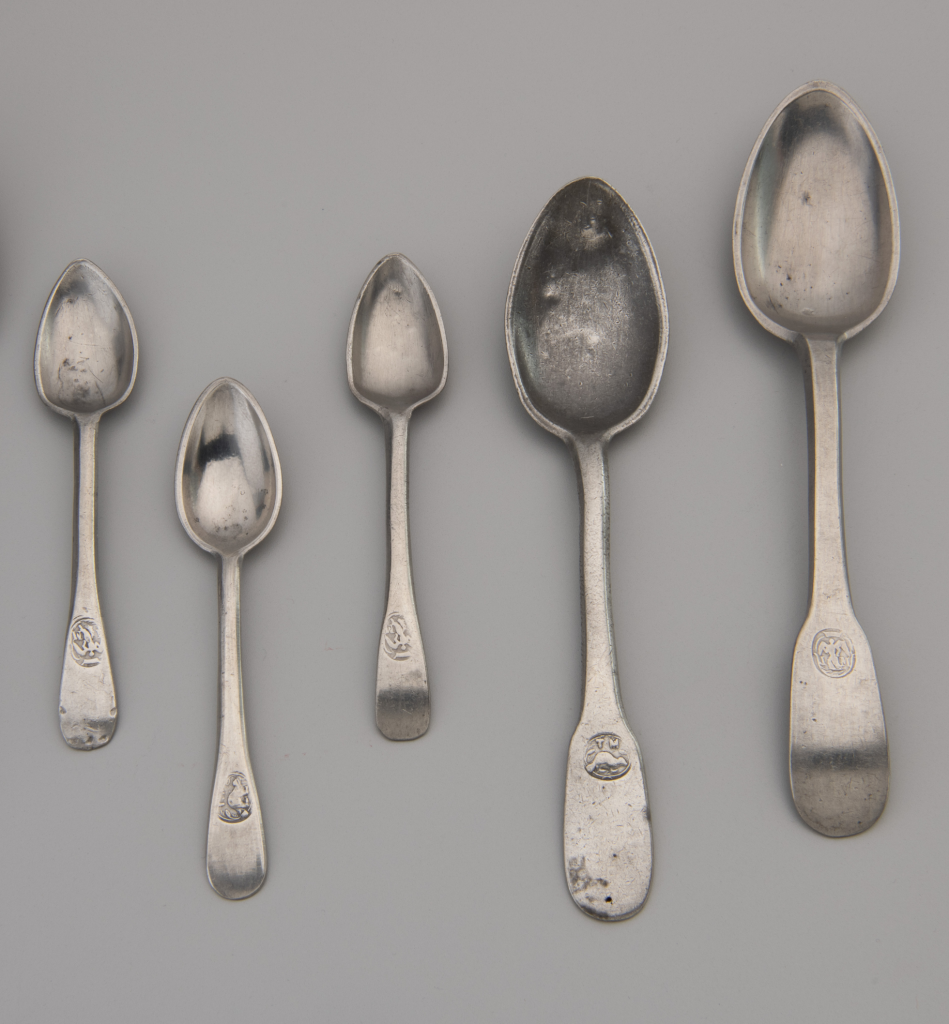Wally’s Beach is the name local settlers have given to a stretch of land on the St. Mary Reservoir in southern Alberta. Around 1990, the site caught the attention of academic researchers, who identified footprints of wooly mammoths and found bones of extinct species of musk ox, camel and bison. For Indigenous Peoples, these “discoveries” at Wally’s Beach have a different meaning. This is the story shared in Artifactuality — a podcast series that imagines a museum of the future made up entirely of the stories we tell each other. In the episode “We Have Always Been Here,” listeners will hear how Blackfoot Elders interpret Wally’s Beach and how Canadian Museum of History archaeologist Dr. Gabriel Yanicki looks at the site.
Download and subscribe to Artifactuality: Stories From the Museum of the Future wherever you get your podcasts.
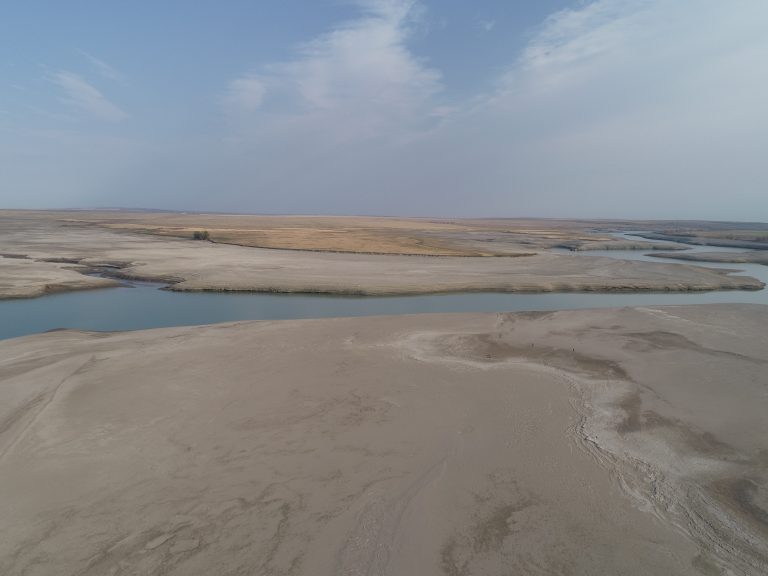
A north-facing aerial view of Wally’s Beach and the St. Mary Reservoir at low water, showing the original channel of the St. Mary River. Across the river lies Kainai Nation land.
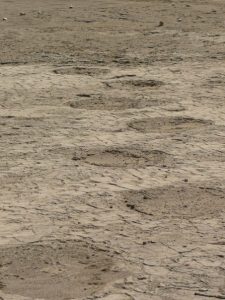
A woolly mammoth trackway preserved at Wally’s Beach.
Photo: Gabriel Yanicki
The Ice-Free Corridor
Located in the heart of Blackfoot territory, Wally’s Beach is on former farmland just across the St. Mary River from the reserve of the Kainai Nation — one of the three Niisitapiikwan (Blackfoot Confederacy) nations, along with the Siksika and Pikani. Wally’s Beach lies in what was once the Ice-Free Corridor — a geographic area where continental ice sheets began to melt about 18,000 years ago, at the end of the last ice age. The corridor has been at the centre of hotly debated theories about the peopling of North America. Many academic researchers now assert that humans first entered North America by crossing the Bering Land Bridge from Asia and gradually moving southward through the Ice-Free Corridor. Yet Blackfoot creation stories don’t mention a land bridge. For the Blackfeet, their history begins in the Northern Plains: they have always been there.
Dr. Gabriel Yanicki, the Curator of Central Archaeology at the Canadian Museum of History, has studied Wally’s Beach for over a decade. In October 2022, he reached out to Blackfoot Elders to share his work and think about how it connects to Blackfoot notions of place and time. Yanicki’s work suggests that some early North Americans may have arrived in Blackfoot territory from the south. He looks at evidence, such as this beautifully crafted obsidian blade, to track the movement of people across the territory. Found by archaeologists near Grande Prairie, Alberta, this spear blade is made from obsidian that matches that from volcanoes located much further south.
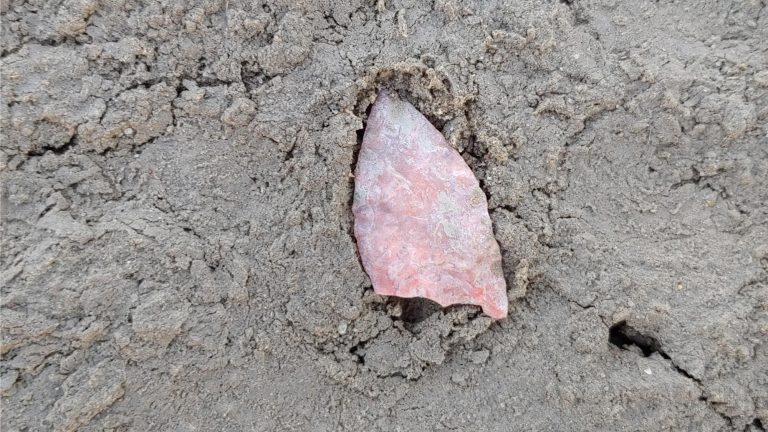
Stone tools like this reworked fluted point, found at Wally’s Beach in 2019, are hallmarks of peoples who lived across much of North America 13,000 years ago.
Photo: Gabriel Yanicki
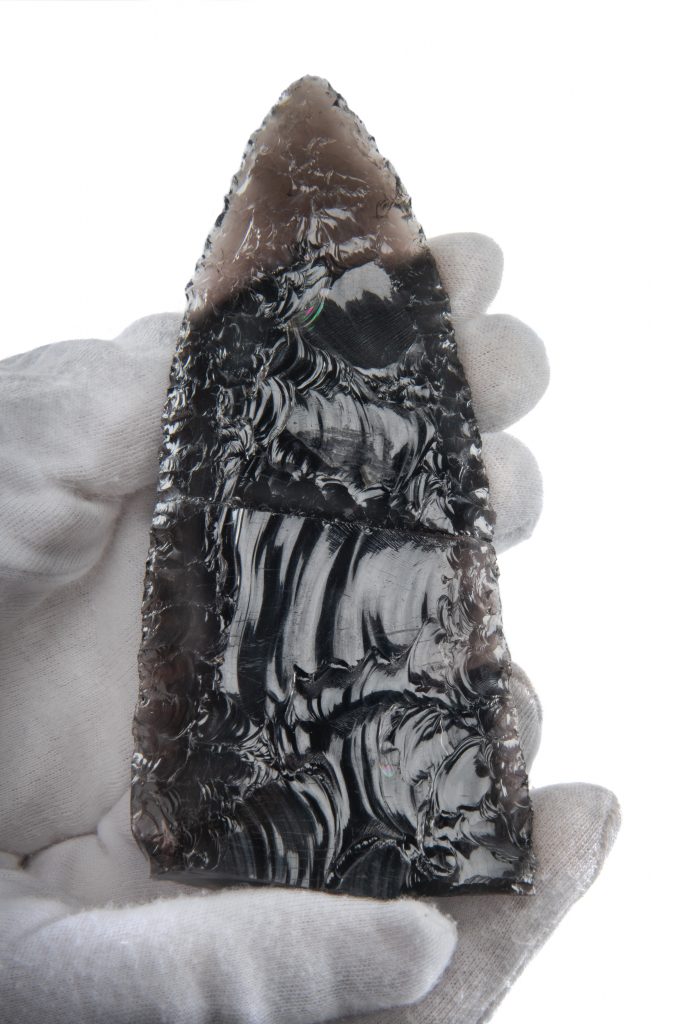
Obsidian blade found in the Grande Prairie region of Alberta.
Canadian Museum of History X-C:97
Blackfoot Notions of Time: “My ancestors’ stories are just two days away.”
Just how far back the human presence in North America goes is a question that has preoccupied archaeologists for decades. At the same time, the scientific search for material evidence does not reflect Blackfoot understandings of the past. In this episode of Artifactuality, Dr. Leroy Little Bear explains that, beyond the threshold of two days, Blackfoot see the past as belonging to the realm of “just is.” In the absence of written historical records, the repetition of stories and oral histories preserves cultural memory, ensuring that ancestral knowledge is close at hand. As Dr. Little Bear says, “My ancestors’ stories are just two days away.”
Blackfoot notions of time have not always been considered within the context of the archaeological record. In the past, the scientific pursuit of knowledge about when humans arrived in the territory now known as Canada was focused on pinpointing timelines and identifying the evolution of peoples, tools and animals. Elders Kent Ayoungman and Jerry Potts agree that, while new advances in archaeology make it indispensable for establishing the historical Indigenous presence in North America, Blackfoot creation stories, material culture, and art must be considered in tandem with archaeological findings and theories.
Decolonizing Archaeology
Conversations like this are a vital step being taken by the Museum and Elders together, to show that the Blackfoot presence in the Northern Plains dates back much further than previously thought. Elder Jerry Potts believes that it is possible to decolonize archaeology to create a deeper understanding of Blackfoot life.
“There’s been a lot of systemic racism by government, and local groups not giving any respect to the people who have always been here. Our stories of creation go back to always being in this territory. We were never transplanted or brought here, and I think, through science and archaeology, the folks that know to get the missing answers are now reaching out to knowledge-holders and that kind of a thing to get a better understanding of the past, and of who we are. Our stories have never changed; they’re still the same.” — Jerry Potts
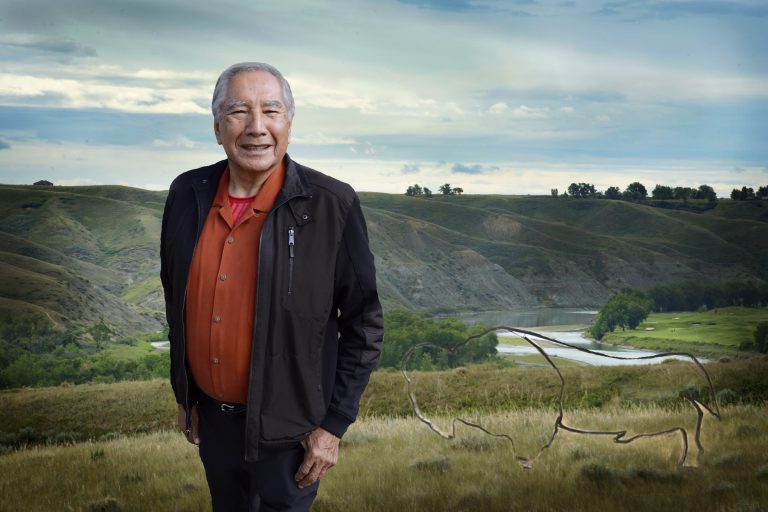
Dr. Little Bear.
Photo: Alberta Order of Excellence
The Future of Wally’s Beach
Yanicki hopes that future work at Wally’s Beach will bring more collaboration with Elders and new ways of integrating Indigenous stories with archaeological research into the Ice-Free Corridor and the people who lived there. Ideally, future scholarly publications will give equal weight to both traditional knowledge and archaeological research. In addition to plans for a new dig, there are hopes that Wally’s Beach will be renamed to reflect its importance to the Blackfoot people.
Additional Resources
- Wally’s Beach is a designated archaeological and paleontological site, protected under Alberta’s Historical Resources Act. Unauthorized access and collecting is prohibited. Please visit the Government of Alberta web page for more information about reporting archaeological finds.
- Foreign Countries podcast, Episode 4.1.: “Latest Research on the Peopling of North America: Fluted Points and Migrations in the Ice-Free Corridor, Canada.”
- RETROactive: Exploring Alberta’s Past website: “Changing Animals: Alberta’s Ice Age Megafauna and Wally’s Beach.”
- National Trust for Canada/Locale journal: “Cliffside Stories: How Head-Smashed-In Buffalo Jump Feeds Today’s Generations” (bilingual article).
- PBS News Hour: “Prehistoric hunt suggests humans arrived in North America earlier than previously thought.”
Download and subscribe to Artifactuality wherever you get your podcasts — Apple Podcasts, Spotify and Google Podcasts — or listen on YouTube.
Learn more about other episodes of Artifactuality:
- The Meaning of Mitsou – A conversation about stardom, style and reinvention
- Breaking Ice – The story of the Coloured Hockey League of the Maritimes
- Hearts of Freedom – A new perspective on Southeast Asia’s refugee crisis
- Prince of Plastic – How Karim Rashid advanced democratic design
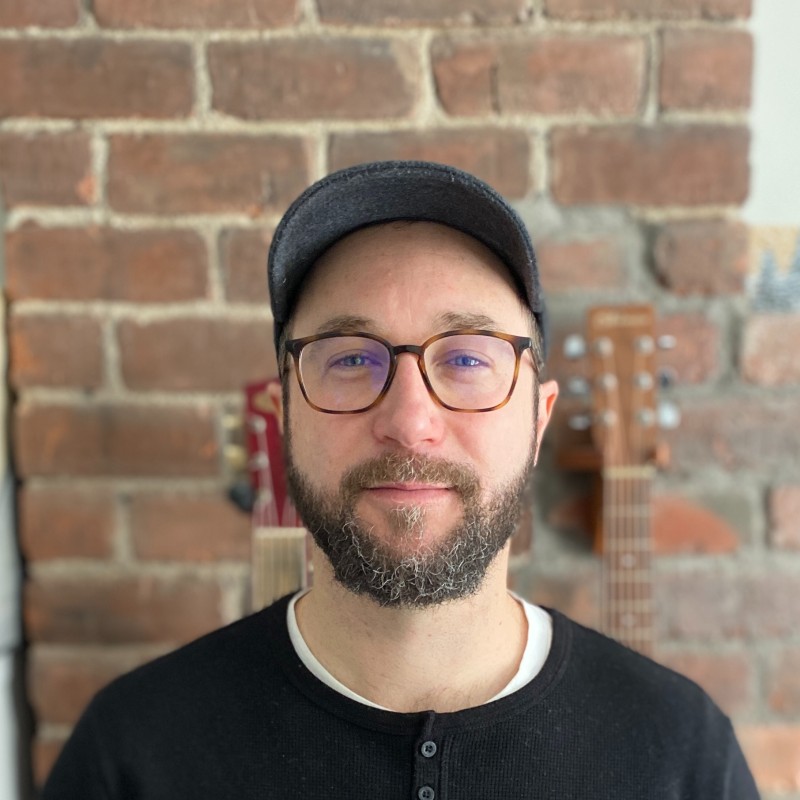
Daniel Neill
Daniel Neill is the Researcher for Sport and Leisure at the Canadian Museum of History. He is also a musician and PhD Candidate in Ethnomusicology at Memorial University of Newfoundland.
